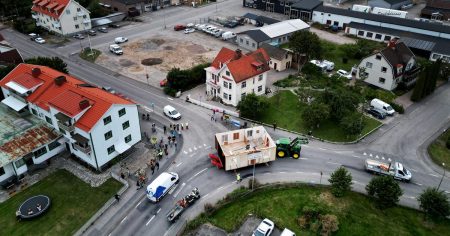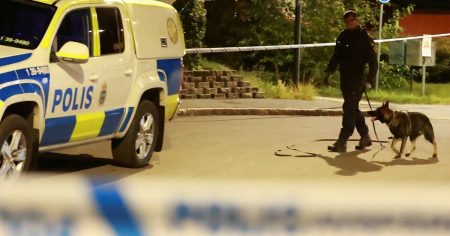The tranquility of a Tuesday evening in Björknäs, a quaint locality nestled within the Nacka municipality, east of Stockholm, was shattered by an explosion at a local restaurant. The incident, which occurred [insert date and time if available], sent shockwaves through the community, though initial reports indicated no injuries. The details surrounding the event remained shrouded in uncertainty, with authorities yet to release an official statement regarding the cause of the explosion. Speculation ran rife among residents and online communities, ranging from a gas leak to a more sinister, deliberate act. However, without official confirmation, these remained mere conjectures, highlighting the crucial need for reliable information dissemination during such critical incidents.
First responders, including police, fire, and rescue services, swiftly converged on the scene, cordoning off the area surrounding the affected restaurant. The immediate priority, according to preliminary reports, was to secure the site and ensure the safety of residents in the vicinity. The methodical approach adopted by emergency personnel underscored the importance of adhering to established protocols in such situations, prioritizing the preservation of life and the prevention of further damage. While the absence of reported casualties offered a glimmer of hope, the potential for structural instability and lingering hazards necessitated a cautious and comprehensive assessment of the scene.
The explosion itself, while the cause remained undetermined, undoubtedly left a mark on the close-knit community of Björknäs. Eyewitnesses described [insert eyewitness accounts if available, otherwise generalize] the chaotic aftermath, emphasizing the sudden and unexpected nature of the event. The impact on local businesses, particularly those in the immediate vicinity of the explosion, was likely to be significant, with potential disruptions to their operations and financial losses. Beyond the immediate physical consequences, the psychological impact on residents, witnessing such a dramatic event, should also be considered. The incident underscored the vulnerability of seemingly ordinary everyday life and served as a stark reminder of the unforeseen challenges that communities can face.
As investigations commenced, the focus shifted towards determining the precise cause of the explosion. Forensic experts and specialized investigators meticulously combed the scene, searching for clues amidst the debris and destruction. The collection and analysis of evidence, a complex and time-consuming process, played a pivotal role in reconstructing the sequence of events leading up to the explosion. Determining whether the incident was accidental or deliberate held paramount importance, not only for understanding the specific event but also for informing future preventative measures and enhancing community safety.
The explosion at the Björknäs restaurant also highlighted the crucial role of effective communication during emergency situations. The dissemination of accurate and timely information to the public is essential for managing public anxiety, preventing the spread of misinformation, and ensuring that residents receive vital instructions and updates. In the immediate aftermath of the incident, the flow of information often faced challenges, as authorities grappled with the unfolding situation and sought to verify details before releasing them publicly. This initial period of uncertainty underscored the need for robust communication protocols that can be readily activated during emergencies, facilitating the rapid and reliable dissemination of information.
Moving forward, the community of Björknäs faced the daunting task of recovering from the shock and disruption caused by the explosion. The physical rebuilding of the damaged restaurant and surrounding structures represented only one facet of the recovery process. The emotional and psychological healing of those affected by the incident, including residents, business owners, and first responders, required equal attention and support. Community solidarity and resilience, often manifested in the aftermath of such challenging events, would be instrumental in navigating the path towards recovery and rebuilding. The incident served as a poignant reminder of the importance of preparedness, both at the individual and community level, for unforeseen events, and the value of collective support in overcoming adversity.














